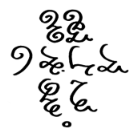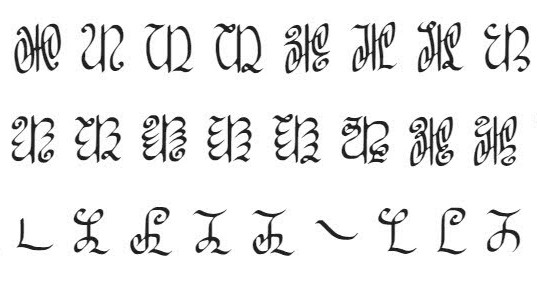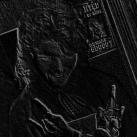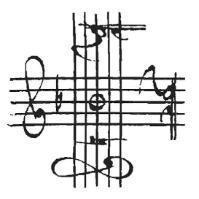-
Posts
170 -
Joined
-
Last visited
-
Days Won
7
Fugax Contrapunctus last won the day on April 9
Fugax Contrapunctus had the most liked content!
About Fugax Contrapunctus

- Birthday July 15
Contact Methods
-
Website URL
youtube.com/@fugaxcontrapunctus
Profile Information
-
Gender
Male
-
Occupation
Student
-
Interests
Composition, language learning, philosophy, conlanging and worldbuilding
-
Favorite Composers
J. S. Bach, Scarlatti, Beethoven, Mendelssohn, Brahms, Chopin, Tchaikovsky, Liszt, Mahler, Rachmaninov, Prokofiev, etc.
-
My Compositional Styles
Contrapuntal neo-Baroque
-
Notation Software/Sequencers
MuseScore 3 & 4
-
Instruments Played
Violin, piano
Recent Profile Visitors
Fugax Contrapunctus's Achievements
-

Double Fugue in E-flat major
Fugax Contrapunctus replied to Fugax Contrapunctus's topic in Piano Music, Solo Keyboard
Agreed, my piano soundbanks are way too mellow for this fugue's overall character. The first subject, as pointed out by one YouTube commenter, has the exact same initial five notes as Bach's 5th Brandenburg Concert's 3rd movement. The key isn't that far off too, a mere semitone above the original in D major. It's both fantastic and mesmerizing how an entirely different piece could come out of such a similar foundation: such is the mastery over melody and harmony Bach simultaneously displayed in his fugal subjects, that we all should strive from learn from him. As for the 2nd subject, it first apears in b. 32 as you correctly observed, and also in b. 84 in non-strict stretto with itself, kind of like a chain of false entries. That was indeed the purpose of the whole cadenza: to provide a less polyphonically dense passage for the sake of letting the listener rest before the final reexposition. The chromaticism you noticed also inversely follow many of the previous modulations employed throughout the whole fugue up until that point. That would normally be the ideal development, but unfortunately the assymetries between both sequences resulted in unbearably clashing dissonances when trying to superpose both subjects on top of one another in invertible counterpoint. Trying to have them in stretto didn't have much better to offer, as it barely served as one, rather sounding like a sequentially yuxtaposed entry on account of how late the 2nd subject could enter in conjunction with the first one without an inexorable clash of minor 2nd intervals. As such, it appeared as though these subjects are way too independent from one another, to the point I couldn't manage to have them work with each other lest the counterpoint and harmonies became severely riddled with intolerable dissonances. Nevertheless, it would have been a pretty nifty idea, had I been willing to modify all iterations of the first subject to account for it while progress on the piece was still underway. Unfortunately however, I am currently only editing this fugue for minor corrections, and a full revamp making either subject fit for stretto or invertible counterpoint with the other will have to wait at least as few years before I revisit this work in hopes of further expanding it. Gracias por todo, Luis. 🙂 -
At long last, your best work to date is not only complete, but fully realized in its flawless entirety. More than 3 quarters of a whole hour, in which the magnificence of your music pours an entire saga, perhaps the single greatest musical achievement of this age of classical music, into our minds, hearts and souls like nothing else heard or listened to before. The mastermind behind the enormity of this awe-inspiringly sublime task shall be remembered far beyond our days, in the far future where the calamities and uncertainty of the early 2020s will have long been forgotten, maybe for good, or perhaps replaced by newer perils and conflicts. We will never have a way of truly knowing, but the greatness of this outstandingly rich and profound sextet turned symphony, I say, shall never truly be forgotten, even should the misfortune of a thousand more disasters strike the Earth and sow the greatest miseries upon millions: for even the sadly lesser known among the greatest works of art have survived similar catastrophies and triumphantly resounded in perpetual echo through the halls of time retold: we still admire them and the wonderous capacity of their creators to produce such exquisite and intricate music to outlast even the world's direst woes; and most important of all, they exist beyond time and space: one copy can be lost and forsaken for decades and centuries at a time, but eventually one kind and gentle soul shall see through the dust in the cover to find the most utter perfection and beauty ever conceived. That much was taught by Mendelssohn when he resurrected Bach's monumental legacy from the most unfortunate, albeit gratefully temporary, of all the oblivions in the history of classical music, and brought the works of the mightiest and most venerable of all composers who ever lived to light and eternal glory for those who would come thereafter to rejoice and marvel at ever since. Thank you, Henry. So many words come to mind when I listen to your work that hardly any of them could be written as I process it all. But even so, your music has changed me: as a student of Bach, as a musician and most importantly, as a person. You have taught me that greatness is not only to be found in the glories of the past alone, but is in fact attainable should we strive for it, work hard enough and keep dreaming of a day when we are remembered for it: that shall be my predicament from now on. As for you, you have already sown the seeds and watered the fields for the bounty of those very fertile crops to flourish, and that wonderful future to come to be, when your music is as remembered and listened to as it is praised and venerated: your work has touched the very Heavens with its power and shall now bask in the light of its eternity for ages upon ages to come. That is the goal we all should aspire to in our lives, and you have shown us the way: even now, it too is possible.
-
So, after one long, sleepless night of nonstop composing, springtime inspiration has blossomed into what I would consider to be potentially one of my best pieces to date. The 2nd subject and its exposition actually were originally part of a totally different, unfinished fugue in F minor, and as such its thematic relevance isn't as prominent as that of the main subject, though significant in certain passages nontheless. Enjoy! YouTube video link:
-

Fughetta in B major.
Fugax Contrapunctus replied to Fugax Contrapunctus's topic in Piano Music, Solo Keyboard
Thank you very much. I find it surprising that I've managed to make it more palatable to the ear than some other denser fugues of mine, but like you say it is only the masters that know how to manage contrapuntal density, Fortspinnung and diversity of approaches towards the simplest materials to grant their usage in each given piece the pinnacle of transformative richness. Those are abilities I still need a long time of honing and perfecting my craft and skills in order to acquire, let alone take them to the same level of greatness as our mighty forefathers. To be honest, I'm not so sure I agree with you here. Let's assume we did in fact exchange and cross voices at the points you noted: just in the first measure, we would have to make a descending tritone leap, and the rising bass from the lower F-sharp to the higher G-sharp in the 3rd beat/1st part of the 2nd beat in what is currently the middle voice would gives us a span larger than an octave in a continuous rising melody, which makes even less sense to me. Even if we take the twist the bass makes in the 2nd beat (rising to B and then descending to A-sharp before rising again) we would still have the melodic span of a major 7th in a non-chordal arrangement (A# C# D# G# instead of A# C# E G#, as would be more expected and acceptable in my opinion). Just now, after revising it again, I have made some changes to the bass and middle voice in b. 73 as follows (as well as adding an A-sharp so as to avoid parallel fifths between the middle and upper voices in the weak 16th-notes of the 2nd beat). I also slightly altered the upper voicing of the supertonic dominant chord before the finale for slightly more rhythmic variety. Regardless, thank you for your remarks, for even if the ones you made didn't make it into this (hopefully final) version, it certainly did make me come back and check for other potential mistakes, which I did end up finding and thus, correcting. 🙂 -

Fughetta in B major.
Fugax Contrapunctus replied to Fugax Contrapunctus's topic in Piano Music, Solo Keyboard
Indeed, that is how I feel about it. Had I got discouraged by my initial lack of skill and abundant contrapuntal mistakes from the get go, I would have ended up disheartened and giving up on composition entirely. My career would simply had died before it could have even started, and I wouldn't have enjoyed composing so many of my fugues, as I set out to do from the very beginning. Regarding the 10ths in b. 71~73, the latest edition has those corrected alongside some minor voicing changes here and there as well. Thank you for your criticism and kind words, Henry 🙂 -

Fughetta in B major.
Fugax Contrapunctus replied to Fugax Contrapunctus's topic in Piano Music, Solo Keyboard
The main issue with transposing the bass an octave upwards between said bars so as to avoid the excessive distances found between all three voices is melodic coherence: in order to keep the bass line as melodically stable as possible in order to avoid uncomfortable leaps or clashes with the middle voice, the whole line had to stay in the lower octave. Still, I should probably look into it again so as to maybe find a potential workaround. For context, here's a link to the version first published in the original post: As you can most likely tell, my counterpoint back then was simply just deplorable. The last commenter was exceptionally kind with their review, given how terribly the rules of counterpoint and mandatory resolutions were handled, plus how awfully disappointing the structure and scant usage of actual contrapuntal devices both were (a general trait unfortunately carried over into the final revamp, save perhaps for the last-time addition of a false entry in b. 81~82). If I recall correctly, I was barely 14 at the time, and after listening to Bach's Kunst der Fuge in its entirety during the late Summer, I decided to try my hand at writing something in his style, perhaps as a way of channeling the mind-bending awe and admiration I felt for the Master's work, or maybe as a rather childish experiment that wouldn't carry over beyond the realm of first-time mediocrity. In spite of how bad my first pieces were, I decided to press on, still knowing my "music" at the time was far less than subpar at best, with a sense of humility, receptiveness and self-improvement to which I owe the place my skills currently stand at. And believe me, as evident as it is from the score in the original post from that year, if you think your counterpoint after composing for 10 years was "worse as shxt", then mine must have been at least 10 times worse than that! As much as I now absolutely loathe the lack of skills in counterpoint my pieces used to display back then, and usually (for the most part) can't stand to look back at my oldest compositions, I still cherish the innocence and naivity from which it all started and came from, which is why I still keep those fugal abominations in a dedicated trash folder instead of deleting them for good: to always keep reminding myself that I too was once nothing but a humble and ignorant novice in the myriad complexities of this vast world that is musical composition. -
A revised version of one of the earliest fugues I ever finished, back in early December 2019. Given I had only started composing a few months prior to that point, this fughetta was previously riddled with contrapuntal flaws and mistakes, the vast majority of which have all hopefully been corrected while leaving the melodic upper voice almost intact (for the most part). Enjoy! YouTube video link:
-
I must admit, at first I unfortunately hesitated to listen to it, knowing full well this gargantuan masterpiece, your self-termed best movement even in comparison to all of your other masterful works, could and would certainly blow me away in such a manner that trying to capture but the slightiest speck of its brilliance into a proper review would be pointless. Even this was a huge understatement, but now, having listened to it in its entirety and starting to recover from such a transcendental journey this masterwork has taken me through, it would be a waste not to express my utter admiration for this thoroughly complex, incredibly expressive marvel of musical endeavour you have managed to outdo yourself with, even to your own high standards. The solemnity and sorrowfully contained, tragicly yearning character of the first theme, followed by the intermittent protagonism of the cello from 6:00 onwards, all coupled with such a diverse array of accompaniment textures, gives these passages a very passionate and intimate timber which fits quite well with the whole thematic significance of the Lamentoso section. Even with the sheer amount of well-structured passages with enharmonic modulations, the choice of the main key for this first section of the movement is just as fitting: I have some remnants of chromatic synesthesia myself, and the sense of sorrow and despair provided by F-sharp minor in this context is far more intense to me than that of coadjacent keys like G minor or G-sharp minor, making it one of my favourite keys. The imitative build up by the end of the Lamentoso contrasts very effectively with the following passage that ends it right before the fugue. The harmonics in the violins between bars 199 and 202 reminded me of the sonority of the Chinese sheng and bamboo pipes (笙簫), which I find a pretty spot-on idiomatic reference! Now, onto the fugue: what I found most remarkable from the very beginning is the adventurous minor 2nd dissonances between both voices in each entry pair. The computerized performance doesn't soften them enough, but I'm certain an actual interpretation by real, professional musicians would be able to bring out the most delicate subtlety of these dissonances, though given the character, tempo and dynamics of the fugue, I'm not entirely sure whether they are meant to be subtle or not. Either way, real performers would surely make them sound better. The development section of the fugue is as immaculate as it is expressive, and the enharmonic modulation to C minor in b. 266, as well as the soothing return to F-sharp minor in b. 271~272, both serve as a contrasting inflection point for the outstanding stretto passages starting at b. 287 and b. 309. The return of the C minor storm at b. 317 serves as a rather pleasingly recognizable pattern leading to the fugue's climax, and the overlapped inversions of the subject's 2nd motivic cell throughout, though somewhat hidden, are incredibly rewarding to find. The following return to F-sharp minor fully completes the circle, giving this whole alternating passage between both keys one tritone apart the cornerstone of internal modulatory coherence. Following the last motiv cry of desperation in b. 393~394 from the first violin, the unexpected introduction to C major with pentatonic reminiscence all over worked as a rather compelling interlude bridging the gap between the sorrowful tone of the first half of the movement and the buildup towards the climax. The arch-shaped melody on the violins with pentatonic counterpoint underneath was simply superb. The sudden return to tragedy between b. 418 and 424 acted as a reminder of the movements overarching character, without undermining the heavenly order of the previous passage, as well as the selective recapitulation episode between b. 424 and 438, prior to the proper "Return" with the rhythmic ostinato on the 2nd cello and the rising and falling dominant 7th arpeggios on the rest of the voice creating a sense of trance before the final contrast between the rising arpeggio on all voices in C major with its subsequent equivalent in the C-sharp whole-tone scale and the growing tension provided by the repeating 16th-note motif on all other voices for a final return to F-sharp minor and the succinct yet elegant conclusion to the fugue in alternating octaves. As for the religious chant, the alternating sections between romantic molto expressivo passages and the organum pedal points with modal viola melodies and the reoccourring flautando reminiscent of b. 199~202 provide a devout, serene atmosphere evidently reminiscent of a more medieval atmosphere, and the organum parallelum in 4ths between both violas suddenly reminded me of some of Joe Hisaishi's own applications of these techniques. The sonority of the miniclimax between bars 535~538 reminded me of several romantic composers at once, the likes of Tchaikovsky, Grieg and Rachmaninov in a single, sunset-like chord brimming with secretly coalescing influences. The passage beginning at b. 540, with its pizzicato ostinati and the return of the 1st cello as the protagonist of flowing pentatonic melodies, reminded me of Shinto rituals and their deep sacrality. The exploration of timbral polyvalence here is majestic: one struggles to tell whether the modal mixture in pizzicati on the violins sound like metal or wooden percussion, strings or reeds. As the imitation between the cellos grows and the pizzicati thunder at the end, the glissandi and pizzicati in bars 569~571 call back to those between b. 159~160 and 168~169, granting them new meaning and giving the listener a deeper understanding of what they had heard before. I looked up the meaning of the poetic line attributed to Venerable Master Hsing Yun at 25:50, and it certainly provided more context for what was coming next. 春天月下一聲蛙,撞破乾坤共一家 - "A frog's croak under the spring moon shatters the cosmos, revealing we all share one home." This rudimentary English translation hardly captures the boundless beauty and eternal wisdom incapsulated in this verse. The following passages, and the reference to 人於天地之間,天地相交 - "Humans exist between Heaven and earth, where Heaven and earth intersect" add even more meaning to the exchanging and crossing of voices... from this point on I find it hard to even conceptualize and voice the way the Tao speaks through your music, through you. Its all-encompassing power in the middle of an imperfect universe in constant fluctuation, destruction and recreation - the music is just so perfect and at the same time so reflective of all the sorrows, the tragedies, the imperfections of this flawed, impermanent world. The transition from the fresh, flowing character of the whole G-flat major build up to the glory of C major is simply magnificent. The temporary transition to the floral and divine of A-flat major and back to C major through both ethereal and Earth-shattering modulations gives even further meaning to the paradoxical, contradictory appearance of the Tao in contrast to its immanent and unchanging nature. Listening to the inversely rising and rapidly cascading passages of the following return to G-flat major felt like a trance, like momentaneously falling into the eternity of a hypnotic fractal. The last section of this unbelievably awe-inducing climax brings a newly dignified and solemn character amidst the marvels of this reconstitution and recreation painted through music in the highest domes and furthest spheres of Heaven. The themes from the whole piece, the subjects from the fugue return all in harmony. And moving onto the recapitulation of the first theme, now purified and eternal, alternating with the more playful interlude-like passages leading to the finale, one last rise to the Heavens and subsequent cascade back to Earth, unifying them with the last chords and suffusing with Humanity with the subtle yet exceeding symbolism of the last glissando. Naturally, this review hardly makes any justice to the sheer magnificence of this intertextual nonpareil masterpiece. With such a lush abundance of both internal and external references, I must have missed many details which contribute to the greater hole in these first listening experiences. The internal narrative structure is so incredibly diverse one could mentally recall and recreate an entire universe of sound and color with each listen, and still be eager for the next. This being your best movement to date is hardly an overstatement, it's an epic of biblical proportions, almost like a whole symphony in the span of a string quartet movement, like the entirety of Dante's Divine Comedy spanning multiple cultures, histories and traditions all in one single concert. It might perhaps even sound condescending of me to say this, with my short, humble fugues and monolithically Baroque counterpoint which could hardly ever reach the variety, diversity, internal coherence and idiomatic mastery of yours, but truly, you have outdone yourself on so many levels that not acknwoledging said fact would be even worse: my sincerest bravo, Henry. I doubt I could ever forget my experience listening to the world you have crafted within this single movement. You are a true master, and perhaps without a doubt, the greatest of our day and age.
-
Based on two dodecaphonic dodecaphonic series, the first of which was inspired on the same procedure employed by the main dodecaphonic series in Anton Webern's Op. 28 String Quartet (quite a remarkable tone row which can be subdivided both into three identical tetrachords and the same four trichords corresponding to each of the four transformations (original, inverted retrograde, inverted, and retrograde respectively)), this perpetually descending double canon combines both tone rows at different pitches and entry points, perfectly calculated to limit the amount of clashing dissonances (such as major 7ths or minor 2nds). The main difference between the first tone row and the one which inspired it is the fact it can be divided into four identical trichords, like in the case of Webern's own, but the fact that the jumping interval is a perfect fourth instead of a minor third as in the original means it cannot be divided into three identical tetrachords, nor can it be arranged so that one of them forms Bach's signature motif, which Webern specifically places at the beginning of his own series, perhaps as a reference, homage or even a tribute to Master Sebastian. Even though the successive iterations (each one full step downwards from the previous one, covering the octave in a whole-tone scale pattern) could theoretically continue ad infinitum, for example, if using techniques such as Shepard tone, they are supposed to stop once a full octave downwards from the original entry has been covered when played with real instruments, with a tonal-sounding cadence added at the end to give a greater sense of resolution. Enjoy! YouTube video link:
-
As stated in the title of this post, today, March 31st 2025, marks exactly 340 years since Johann Sebastian Bach's date of birth (at least, according to the Gregorian Calendar, that is). Thus, in commemoration of his insurmountable heritage and the immortal spirit abundantly residing in the plentiful boughs of his art and soul, reverberating through the ages of Western musical tradition centuries after he blessed the Earth with his industrious talent, unflinching devotion and heavenly music, I have decided to remember this special occasion by uploading a revised version of another fugue of mine dedicated to him as well: my Fugue in G minor No. 16, which I first dubbed "Bach's Legacy Fugue" on account of the repeated usage of his musical signature throughout the piece. Hopefully, in about 10 years' time, I will have composed yet another, more ambitious fugue to mark his 350th birthday, though sooner than that (this summer, in fact), I should probably dedicate a different composition to the 275th anniversary of his passing. Enjoy! YouTube video link:
- 1 reply
-
- 1
-

-
Modern Polyphony started following Fugax Contrapunctus
-

Fugue in E minor No. 15.
Fugax Contrapunctus replied to Fugax Contrapunctus's topic in Piano Music, Solo Keyboard
Buenas Luis, I wholeheartedly appreciate your honesty and sincerity, and looking back at it I can see what you mean by describing it as "lacking passion". I might be wrong, but I now feel such a label maybe could just as easily apply to every single of the fugues I have composed throughout the years, in more ways than one. I doubt this is a localized issue specific to this one fugue, though I might be wrong on that front. As much as it hurts to confront the truth sometimes, this one might as well be little more than a counterpoint exercise indeed, even if I did not perceive it as such when composing and revisiting it. The past weekend has been as though a devastating tornado leaving once bountiful fields barren, as I was informed with a week's delay that a childhood friend of mine whom I had lost contact with for the last couple years had died by suicide the previous Monday. To say visiting the family to offer my condolences was tough would be a heartless euphemism, even more so given what irreparable anguish they must have gone through and have still to endure for such a long time. As such, I did what I could with how little inspiration came from the couple last sleepless nights this turmoil has deeply troubled me with: given my current mental instability in light of it all, what tireless hours of composing have yielded this output may as well have drained how little remained of my capacity to express all these bottled-up feelings. To me, it honestly matters very little as of now what this work of mine may be considered or held as: by its own nature, my personal evolution within Bach's style as I sought to adopt it has made excessive expressiveness of far lesser interest to me than to the common romantic acolyte, however moving and attractive their corollaries may still seem even nowadays. This, in turn, often makes my music and its computerized renderings sound mechanical and unabating, which I know I must seek to refine gradually or eventually, at the cost, perhaps, of polyphonic density and contrapuntal complexity. It is thus that I strive to emulate one of the core ideas I cherish to be found at the heart of Bach's quantitatively and qualitatively nigh unrivaled production: the search for the Golden Mean, balance and temperance simultaneously in their purest and most embellished forms. The road extends a long way ahead yet, and the end is not to be found at any of the ends of the Earth, nor the Universe even, dare I say. Nevertheless, I shall still devote my efforts to pining even for the slightiest, least relevant approximation to that immortal spirit and legacy that has granted us all so much more than just perfect music: for as Emil Cioran once uttered with such unbound wisdom and the everlasting reverence I believe we all share, "Bach's music is the only argument proving that the creation of the Universe cannot be regarded as a complete failure. Without Bach, God would be a complete second-rate figure". -
It feels almost shameful of me not to have reviewed this absolute masterpiece before, but now that I have listened to it three times in a row I won't let this mistake go on in vain, even if my rather modest review barely adequately captures but a millionth of the emotion and awe this movement has so profoundly stirred within me. Unfortunately my Mandarin probably wouldn't be accurate nor fluent enough to convey but a fraction of my thoughts properly, so as much as it pains me, for the sake of avoiding messy syntax and cumbersome grammar mistakes I shall stick to English instead. It feels almost unreal how seamlessly you have managed to blend such a relatively obscure and challenging mode as is the Locrian with all manner of bright, tempered Chinese melodies worthy of the very Heavens, all coupled in with such balanced, smooth transitions between the different sonata sections, the precious, flowing cascades of Chopin-esque embilleshments, and all the crunchy, adventurous disonnances peppered in add so much color an flavour throughout in their various uses, at times delicate and brittle, by the end of the middle sections powerful and assertive as the materials' complexity wells... With this mountain of motivic and harmonic winks and references to feast on, this moderately eclectic style you have crafted is so distinctly and unambiguously yours: so refined, formally impeccable and still never failing to draw great interest and engagement at every turn, in every single bar. It is bewilderingly mesmerizing indeed. It almost strikes me as admirable how strong and powerful the parallel fifths sound 3:50, a perfect example of strategic "rule-breaking" to the benefit of dramatic tension, as well as the prolific usage of Phrygian cadential formulae throughout which so intimately remind me of my own country's music. I find such confidence commendable in more ways than one, in large part because of how starkly contrasting yet effective and mighty it sounds. And still what I admire most from this is the motivic and thematic development, striking a nigh unbeatable balance between repetition, variation, dynamism and novelty potentially rivaling that of the most renowned classical composers in its own unique essence and flavor. A more thorough analysis of this movement would most likely reveal jaw-dropping levels of integrity with the slight yet fully justifiable deviations that only amount to greater complexity and mastery of this titanic work. Even if obvious and perhaps even redundant at this point, for me it is worth saying once more: you may as well be the Master of our time. The heights reached by your music hardly know even the furthest bounds of quality, so much so that I find it hard to even dissect the piece and hear its sections separately because of how well they all connect and blend together, it makes me want to fully listen to it in its entirety every time. 我衷心感謝你天才譜寫這麼又優雅又秀麗的音樂。
-
After a series of somewhat unexpected and tumultuous events taken place last weekend, my sleep schedule suddenly got inverted again, and the subsequent rush of inspiration has resulted in this fugue being conceived and finished in under three days (or perhaps, rather, sleepless nights, should I say). Now that something productive has come of it once again, I can finally take some time to rest in whatever meager capacity I may. Enjoy! YouTube video link:
-

Fugue in D minor No. 26.
Fugax Contrapunctus replied to Fugax Contrapunctus's topic in Piano Music, Solo Keyboard
If you ask me, it sounds more mechanical and way less fluid to me. But I guess it can stay that way for the sake of your preference. -

Fugue in D minor No. 26.
Fugax Contrapunctus replied to Fugax Contrapunctus's topic in Piano Music, Solo Keyboard
@chopin Thank you so much for your input! Just two minor clarifications: The harpsichord soundbanks used in the video are, in fact, identical in of themselves to the ones used in the MP3 rendering. The latter however, being the original soundfont, was set to A =415 (a staplemark Baroque tuning) in 1/5 comma meantone temperament, whereas the twin soundfont used for the video was tuned to a more conventional A = 440 in equal temperament. The recording attached below is in ♩ = 78. Is that better? I hesitate to even dial the tempo down even further, lest the piece might start sounding way too mechanical.


.thumb.png.8b5b433a341551e913a34392660bc95b.png)















